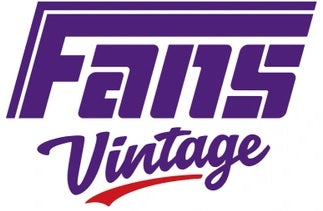Earth Week and Shopping Sustainably
Earth Week is great time to consider how our behaviors either contribute to or reduce our negative impact on the planet. It's also an opportunity to make a difference by reducing your carbon footprint! Did you know that the fashion industry and clothing production is one of the biggest contributors to pollution? Read on to discover more about the environmental impact of fashion and how shopping vintage and re-sold clothing can make a huge difference in the health of our planet!
What are Vintage Items?
Vintage is a term used to describe items that are over 10 years old (or over 20 depending on who you ask!) These items are usually made of natural materials and have a unique look, feel and smell because they have been passed down through generations. They may also come with their own stories or history, which adds value to your purchase!
Vintage items include furniture, clothing and jewelry - anything that you can wear or use in your home.
Environmental Impact of Fashion Industry
The fashion industry is one of the biggest contributors to climate change. It's estimated that the textile and apparel industries account for about 10% of global greenhouse gas emissions, which is more than all cars and trucks combined.
The main reason for this is because it requires a lot of resources to produce new clothes. For example, it takes 17 gallons of water per pound of cotton grown and 2,700 gallons per pound of wool produced in order to make fabric for clothing (1). In addition, many types of fabrics require harsh chemicals during manufacturing processes that pollute our air and water supplies (2).
The good news is that buying vintage items can help reduce your carbon footprint while also saving money! By choosing secondhand pieces over new ones whenever possible--especially when shopping online--you'll be reducing your overall impact on our planet while still looking stylishly fashionable at work or school every day.
Our favorite part of shopping vintage other than finding unique items compared to the mass-produced options you'll find in stores today:
-
Vintage items are typically made with sturdier materials and will continue to look great wash after wash, wear after wear
-
Nostalgic? Wearing vintage is often the only way you can rep awesome designs that are no longer used or made
-
Vintage items aren't ones you want to discard or donate after one use because of their durability and timeless design
Tips for Shopping Vintage Items
Where to Find Them:
If you're looking for vintage items, there are a few places that are good to start. The first place is your local thrift store or charity shop. You can also check out antique shops and flea markets. If you want something specific, like a certain kind of furniture or clothing item, then it might be worth searching online for stores that specialize in those particular types of goods (for example, shopping www.fansvintage.com if you're looking for awesome vintage and rare TCU gear).
We hope this brings some insight into the impact the clothing you buy and wear has on our environment, and how buying vintage can not only be a way to make a rad fashion statement - it's a great way to be sustainable and help out Mother Earth!
-
"Water Footprint Network." Water Footprint Network, 2021, waterfootprint.org/en/water-footprint/product-water-footprint/water-footprint-cotton/.
-
"Chemicals of Concern in the Textile Industry." Textile Exchange, 2018, textileexchange.org/wp-content/uploads/2018/11/TE_Chemical-List_2018.pdf.

